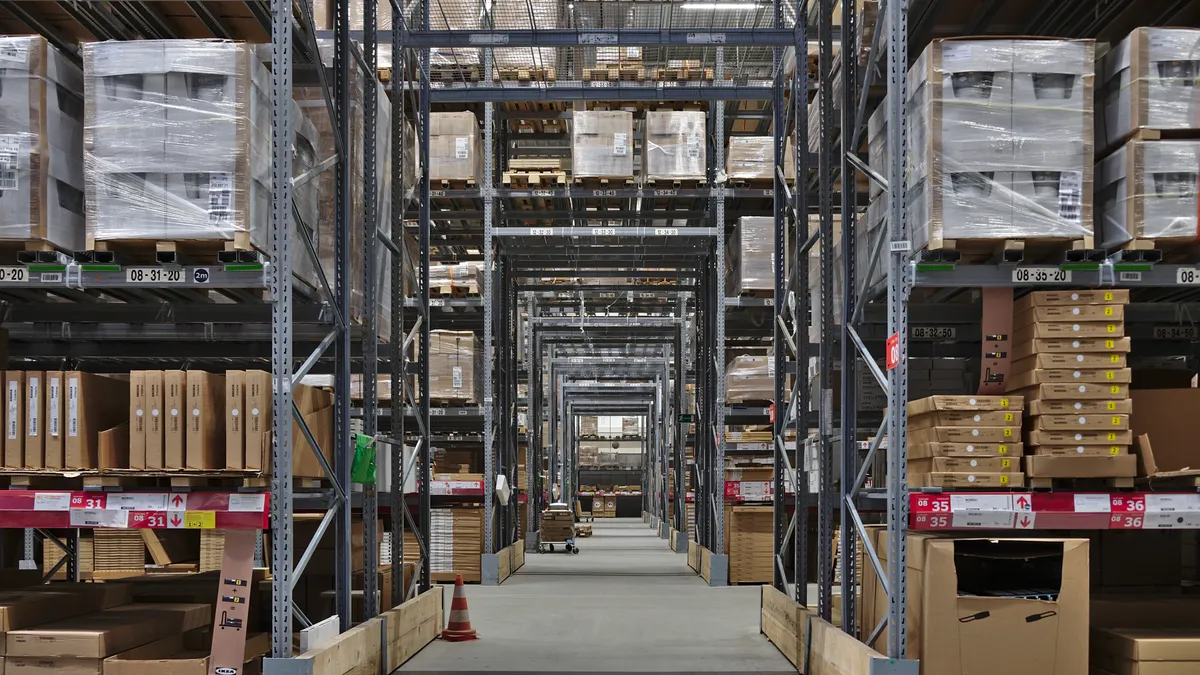A lot of retailers had no choice but to pause returns at brick-and-mortar locations during state-mandated COVID-19 shutdowns. But now that those same states are opening up, what will happen to pent up return demand?
According to a survey conducted by Optoro of more than 2,000 U.S. residents in May, more than a third of respondents were holding on to at least one return while stores were closed. The survey also found 60% of respondents think they’ll feel safe to go back into stores when they re-open.
"We very much expect a flood of returns coming back in," Larisa Summers, senior VP of marketing at Optoro, told Retail Dive's sister publication Supply Chain Dive in an interview.
With nearly all 50 states in some stage of reopening, retailers and operations managers must prepare by tapping into reverse logistics technology and addressing worker safety to meet a surge in returns demand.
Lean on data and peak season lessons
While the COVID-19 pandemic is a unique situation, the retail atmosphere it has created is not. It’s like holiday returns in June instead of January, Nate Barad, director of product marketing and strategy at Episerver, told Supply Chain Dive in an interview.
"They have experience with piles and piles of returns and piles of people trying to return things," he said, adding that retailers should lean on the same technologies and processes they use to process holiday returns and mirror those practices.
Data can help. "The most sophisticated retailers use algorithmically, data driven software," Summers said. "When returns come back in, they can scan the return, [assess] what condition it’s in, and their software system can automatically tell them what to do with that particular good at that particular moment based on a variety of different data points."
"We very much expect a flood of returns coming back in."

Larisa Summers
Senior VP of Marketing, Optoro
Those data points include what the item sells for new, what it sells for on the secondary market and what generation technology an item is or has. Retailers can then decide if they want to sell it new at full price, sell it at a deep discount, resell it to a discounter, recycle it or liquidate it.
This kind of data-driven technology is also key for items returned at brick-and-mortar locations that are typically sold online only and not in stores, said Summers.
Some retailers are also shifting their traditional retail timelines to accommodate this year’s shopping habits and allowing time for items that have been in warehouses or returned to still sell. Nordstrom has pushed back its Anniversary Sale from July to August, "as we expect a heavy promotional retail environment through July," Nordstrom CEO Erik Nordstrom said in the company’s Q4 earnings call.
"It looks like it was pushed from July to August to allow for additional time to work through current inventory," Carlos Castelán, founder and managing director of The Navio Group, told Supply Chain Dive in an interview.
Warehouse capacity has contracted as retail inventory sits idle due to low demand, but experts did not express concerns over having enough warehouse space to manage reverse logistics.
Warehouse safety in returns
Retailers must create safe procedures for warehouse workers. "The first thing is going to be to consider safety and how you balance recommended guidelines or establish procedure that’s going to be different," said Barad. "Is it going to be a six feet distance or are we going to practice 10?"
Retailers must make a clear statement that safety comes first in warehouses, not only because it’s the right thing to do, but also to attract workers.
Barad anticipates a renewed focus on hiring and training "because the same people you furloughed may or may not be available to come back," he said. Warehouse managers can train new employees by using digital e-learning to get them trained as quickly and as safely as possible.
"You’ll have to match the curve of reopening demand with the curve of re-educating your staff," he said.
Castelán also said temporarily changing return policies can help with a glut of returns and the labor needed to handle them. "Let’s say a company set up a policy for 30 or 60 days for anyone to send a product they purchased in 2020 back," he said. "You can surge labor to process that."
That labor can then be dispersed, reallocated or retained because those workers might be necessary to handle how we shop now. "E-commerce has taken off during this time," Castelán said. "So how do you continue to fulfill those orders but also dedicate team processes to address reverse logistics?"
"You’ll have to match the curve of reopening demand with the curve of re-educating your staff."

Carlos Castelán
Founder and Managing Director, The Navio Group
In its survey, Optoro found 31% of consumers mailed in a return during quarantine, despite nearly half of them stating that they typically return to a physical store. In addition, 44% said they will continue to return items in the mail.
Summers said retailers should watch this behavior closely in case it changes their reverse logistics in the long term, and not just during the COVID-19 pandemic.






















